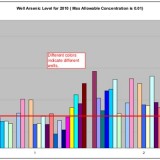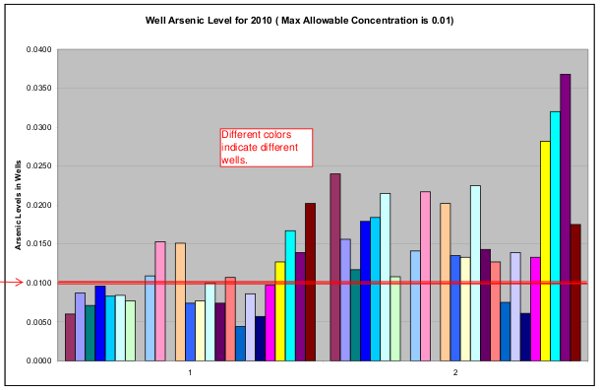From Monbiot.com – Mar 21, 2011
by George Monbiot
How the Fukushima disaster taught me to stop worrying and embrace nuclear power.
By George Monbiot, published in the Guardian 22nd March 2011
You will not be surprised to hear that the events in Japan have
changed my view of nuclear power. You will be surprised to hear how they
have changed it. As a result of the disaster at Fukushima, I am no
longer nuclear-neutral. I now support the technology.
A crappy old plant with inadequate safety features was hit by a
monster earthquake and a vast tsunami. The electricity supply failed,
knocking out the cooling system. The reactors began to explode and melt
down. The disaster exposed a familiar legacy of poor design and
corner-cutting(1). Yet, as far as we know, no one has yet received a lethal dose of radiation.
Some greens have wildly exaggerated the dangers of radioactive
pollution. For a clearer view, look at the graphic published by
xkcd.com(2). It shows that the
average total dose from the Three-Mile Island disaster for someone
living within 10 miles of the plant was one 625th of the maximum yearly
amount permitted for US radiation workers. This, in turn, is half of the
lowest one-year dose clearly linked to an increased cancer risk, which,
in its turn, is one 80th of an invariably fatal exposure. I’m not
proposing complacency here. I am proposing perspective.
If other forms of energy production caused no damage, these impacts
would weigh more heavily. But energy is like medicine: if there are no
side-effects, the chances are that it doesn’t work.
Like most greens, I favour a major expansion of renewables. I can
also sympathise with the complaints of their opponents. It’s not just
the onshore windfarms that bother people, but also the new grid
connections (pylons and power lines). As the proportion of renewable
electricity on the grid rises, more pumped storage will be needed to
keep the lights on. That means reservoirs on mountains: they aren’t
popular either.
The impacts and costs of renewables rise with the proportion of power
they supply, as the need for both storage and redundancy increases. It
may well be the case (I have yet to see a comparative study) that up to a
certain grid penetration – 50 or 70% perhaps? – renewables have smaller
carbon impacts than nukes, while beyond that point, nukes have smaller
impacts than renewables.
Like others, I have called for renewable power to be used both to
replace the electricity produced by fossil fuel and to expand the total
supply, displacing the oil used for transport and the gas used for
heating fuel. Are we also to demand that it replaces current nuclear
capacity? The more work we expect renewables to do, the greater the
impacts on the landscape will be, and the tougher the task of public
persuasion.
But expanding the grid to connect people and industry to rich,
distant sources of ambient energy is also rejected by most of the greens
who complained about the blog post I wrote last week(3).
What they want, they tell me, is something quite different: we should
power down and produce our energy locally. Some have even called for the
abandonment of the grid. Their bucolic vision sounds lovely, until you
read the small print.
At high latitudes like ours, most small-scale ambient power
production is a dead loss. Generating solar power in the UK involves a
spectacular waste of scarce resources(4,5).
It’s hopelessly inefficient and poorly matched to the pattern of
demand. Wind power in populated areas is largely worthless. This is
partly because we have built our settlements in sheltered places; partly
because turbulence caused by the buildings interferes with the airflow
and chews up the mechanism. Micro-hydropower might work for a farmhouse
in Wales; it’s not much use in Birmingham.
And how do we drive our textile mills, brick kilns, blast furnaces
and electric railways – not to mention advanced industrial processes?
Rooftop solar panels? The moment you consider the demands of the whole
economy is the moment at which you fall out of love with local energy
production. A national (or, better still, international) grid is the
essential prerequisite for a largely renewable energy supply.
Some greens go even further: why waste renewable resources by turning
them into electricity? Why not use them to provide energy directly? To
answer this question, look at what happened in Britain before the
industrial revolution.
The damming and weiring of British rivers for watermills was
small-scale, renewable, picturesque and devastating. By blocking the
rivers and silting up the spawning beds, they helped bring to an end the
gigantic runs of migratory fish that were once among our great natural
spectacles and which fed much of Britain: wiping out sturgeon, lampreys
and shad as well as most seatrout and salmon(6).
Traction was intimately linked with starvation. The more land that
was set aside for feeding draft animals for industry and transport, the
less was available for feeding humans. It was the 17th-Century
equivalent of today’s biofuels crisis. The same applied to heating fuel.
As EA Wrigley points out in his new book Energy and the English
Industrial Revolution, the 11 million tonnes of coal mined in England in
1800 produced as much energy as 11 million acres of woodland (one third
of the land surface) would have generated(7).
Before coal became widely available, wood was used not just for
heating homes but also for industrial processes: if half the land
surface of Britain had been covered with woodland, Wrigley shows, we
could have made 1.25 million tonnes of bar iron a year (a fraction of
current consumption(8))
and nothing else(9). Even with a much lower population than today’s,
manufactured goods in the land-based economy were the preserve of the
elite. Deep green energy production – decentralised, based on the
products of the land – is far more damaging to humanity than nuclear
meltdown.
But the energy source to which most economies will revert if they
shut down their nuclear plants is not wood, water, wind or sun, but
fossil fuel. On every measure (climate change, mining impact, local
pollution, industrial injury and death, even radioactive discharges)
coal is 100 times worse than nuclear power(10,11). Thanks to the expansion of shale gas production, the impacts of natural gas are catching up fast(12).
Yes, I still loathe the liars who run the nuclear industry. Yes, I
would prefer to see the entire sector shut down, if there were harmless
alternatives. But there are no ideal solutions. Every energy technology
carries a cost; so does the absence of energy technologies. Atomic
energy has just been subjected to one of the harshest of possible tests,
and the impact on people and the planet has been small. The crisis at
Fukushima has converted me to the cause of nuclear power.
Read original article
www.monbiot.com
References:
1. http://www.guardian.co.uk/environment/2011/mar/14/nuclearpower-energy
2. http://xkcd.com/radiation/
3. http://www.monbiot.com/2011/03/16/atomised/
4. http://www.monbiot.com/2010/03/01/a-great-green-rip-off/
5. http://www.monbiot.com/2010/03/12/the-german-disease/
6. Callum Roberts, 2007. The Unnatural History of the Sea. Gaia Thinking, London.
7. EA Wrigley, 2010. Energy and the English Industrial Revolution, pages 37 and 39. Cambridge University Press.
8. The UK steel requirement in 2009 was 15.6m tonnes. http://www.eef.org.uk/uksteel/About-the-industry/Steel-facts/Steel-markets-UK.htm
9. EA Wrigley, as above, pages 16 and 17.
10. In the case of radioactive pollution, the 100 times is not
figurative: according to Scientific American, the fly ash produced by a
coal-burning power plant “carries into the surrounding environment 100
times more radiation than a nuclear power plant producing the same
amount of energy.” http://www.scientificamerican.com/article.cfm?id=coal-ash-is-more-radioactive-than-nuclear-waste
11. Mark Lynas has just produced his first estimates for the amount
of extra carbon dioxide which could be released as a result of the
international reaction to the Fukushima crisis. http://www.marklynas.org/2011/03/176/
12. See http://www.gaslandthemovie.com/





